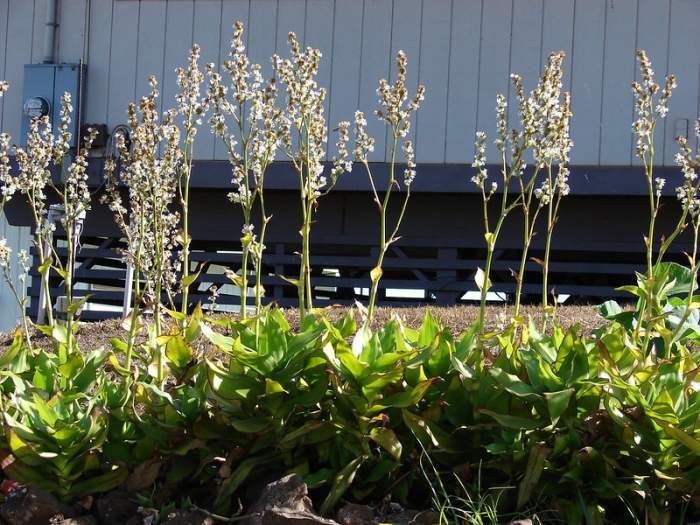Basketplant
(Callisia fragrans)
Basketplant (Callisia fragrans)
/
/

Forest and Kim Starr
CC BY 2.0
Image By:
Forest and Kim Starr
Recorded By:
Copyright:
CC BY 2.0
Copyright Notice:
Photo by: Forest and Kim Starr | License Type: CC BY 2.0 | License URL: https://creativecommons.org/licenses/by-sa/2.0/ | Uploader: Starr Environmental | Publisher: Flickr |
























Estimated Native Range
Summary
Callisia fragrans, commonly known as Basketplant, is an evergreen perennial herb originally found in the understory of tropical forests in Central America and Mexico. It can reach up to 1 meter in height and has fleshy stems with leaves that can grow up to 25 centimeters long. The foliage may take on a violet hue when exposed to strong sunlight. Its blossoms, which appear in winter and spring, are white and notably fragrant, adding to its ornamental value. Basketplant has been popular as an indoor plant since the early 1900s due to its ease of care and attractive appearance.
Basketplant is valued for its air-purifying qualities and is often used in hanging baskets or as a ground cover in warm, frost-free regions. It thrives in partially shaded areas and requires high amounts of water, preferring moist, fertile soils with medium drainage. While it is easy to maintain, it is important to be cautious with its watering needs to avoid root rot. Callisia fragrans is known to be potentially invasive in subtropical and tropical areas, such as Florida, due to its rapid growth and ability to spread through fragments. Gardeners should consult local regulations before planting it outdoors to prevent ecological disturbances.CC BY-SA 4.0
Basketplant is valued for its air-purifying qualities and is often used in hanging baskets or as a ground cover in warm, frost-free regions. It thrives in partially shaded areas and requires high amounts of water, preferring moist, fertile soils with medium drainage. While it is easy to maintain, it is important to be cautious with its watering needs to avoid root rot. Callisia fragrans is known to be potentially invasive in subtropical and tropical areas, such as Florida, due to its rapid growth and ability to spread through fragments. Gardeners should consult local regulations before planting it outdoors to prevent ecological disturbances.CC BY-SA 4.0
Plant Description
- Plant Type: Herb
- Height: 2-3 feet
- Width: 2-4 feet
- Growth Rate: Moderate
- Flower Color: White
- Flowering Season: Winter, Spring
- Leaf Retention: Evergreen
Growth Requirements
- Sun: Part Shade
- Water: High
- Drainage: Medium
Common Uses
Groundcover, Low Maintenance
Natural Habitat
Originally found in the understory of tropical forests in Central America
Other Names
Common Names: Löparnisse
Scientific Names: , Callisia fragrans, Spironema fragrans, Rectanthera fragrans, Spironema orthandrum,
GBIF Accepted Name: Callisia fragrans (Lindl.) Woodson